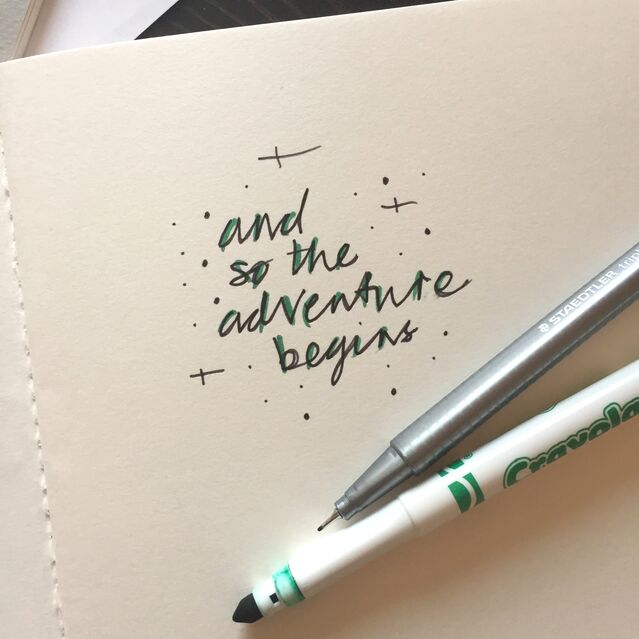Motivation
Creating Meaningful Resolutions for 2022
5 simple steps to infuse intentionality into the new year.
Posted December 27, 2021 Reviewed by Tyler Woods
About 80 percent of New Year's resolutions fail by February. What causes most of us to abandon our aspirations, and so soon in the year at that? When you read this statistic, you may be tempted to save yourself the time by not setting any resolutions for the year ahead. But before you abandon the process altogether, consider reevaluating your usual method. Try following these five simple steps to create more meaningful resolutions.

Create a comfortable, safe space to let your mind and heart explore.
In order to create meaningful aspirations for the year ahead, you have to be able to delve into the depths of who you are. It is easy to get caught up in the busyness of your world and avoid reflection. However, if you do not set aside the time to understand what is meaningful to you, it will not be possible to create meaningful resolutions. You know yourself best: What is the best environment for you? Is it in the comfort of your bedroom? On your favorite bench at the local park? Try to minimize distractions. Gather materials that will help you to relax and explore. Examples may include candles, aromatherapy, music, colored pens, cozy blankets, or a warm beverage.
Set aside adequate time to reflect.
Resist the urge to pack all your reflection into one session. One condensed session is insufficient to reflect thoroughly. This can be an intimidating experience. This overwhelmed feeling can become associated with the process and can cause a sense of dread when you think about your dreams for the new year. Try to explore this process over multiple sessions.
If you feel comfortable, you can jump right in with open-ended reflections. If you prefer prompts, consider asking yourself these 3 questions:
Who am I?
What matters most to me?
Where am I (in reference to the past, especially the year behind me)?
If you are intimidated by the process, seek resources for your reflection. That may include incorporating a guide such as my Self-Love Workbook, addressing this topic with a therapist, and gathering close loved ones for encouragement and mutual support. If you do opt to incorporate others into the process, try to set aside at least one session that allows you to explore independently.
Time for reflection should be prioritized throughout the resolution process. It is important as a foundation for setting your hopes for the year ahead, however, it is also essential to carve time to revisit in the days ahead.
Consider key concepts that you wish to infuse into the year ahead.
After you have established a more meaningful foundation, remain connected to that depth as you move into considering your wishes for the next year. If possible, start this step in one setting. You can refine your intentions over time, however, what comes to mind at first is often what genuinely means most to you.
Find a medium that works for you. If you have gathered with others, this may be done in conversation. Perhaps you choose to explore through journaling. Some find it helpful to use visual aids, such as through a vision board. To broaden your perspective, it can be helpful to brainstorm and refine later by using methods such as voice recording or mind mapping.
A word, phrase, or image may come to mind. These key concepts serve as a framework for your intentions in the year ahead. It is natural that examples will pop up, especially if you already have events on your calendar or have been deeply influenced by lessons of the year past. Be mindful of your self-talk. Don’t allow space for judgment or criticism.
Familiarize yourself with the steps associated with each intention.
The beauty of intentionality versus specific goal setting is that it allows for the reality that change is inevitable. It is possible that what you wish for today will remain exactly the same in the months to come, but more often than not, things shift. For one, you change as you learn and grow, so a resolution made in January may no longer fit you in August. Stubbornly attaching yourself to that wish can cause you to be disconnected from your true self. Beyond yourself, the world around you changes. Utilizing intentionality allows you to reassess and re-calibrate to match your surrounding context.
As you consider each concept from Step 3, reflect on what it would look like to take steps towards those intentions at this current time. It is also beneficial to reflect on what it would look like to take steps away from that intention at present. Come up with as many examples as you can. These lists will create a guide for you to notice signs of when you are aligned, and when you need to reroute your journey.
Create a habit of checking in
New year’s resolutions shouldn’t be a "set it and forget it" process. As noted earlier, the best intentions are often formed when you allow yourself time to reflect, reassess, and refine. Once the year begins, it is important to create a habit of checking in on your resolutions. Come up with a rate that fits your lifestyle, but consider doing so monthly at a minimum.
Utilize the steps you clarified to help you discern if you are centered or veering off your path. These checkpoints are also helpful points for you to incorporate new information you have learned, consider any changes in context, edit your steps, and, of course, celebrate the moments you find yourself in alignment with your intentions.
There are a variety of reasons as to why your New Year's resolutions may have failed in the past. Here we explored how to foster intentional resolutions to help you live a more meaningful year. To learn about four other reasons why you may struggle with resolutions read this piece.




